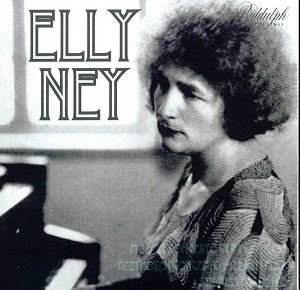AVAILABILITY
www.biddulphrecordings.com
Of all the musicians tainted by their actions
during the Second World War few could have seen their reputations
sink lower than Elly Ney. A fanatical Hitler worshipper her appearances
after the conflagration were mainly peripheral and the reputation
she had earlier built as a concerto soloist, Beethovenian of the
first rank and powerful chamber player pretty much evaporated.
That she really was a player of sometimes quixotic distinction
can be verified from her surviving recordings, not least those
with her own trio and expanded quartet (the players included Florizel
von Reuter, Walter Trampler and the cellist Ludwig Hoelscher with
whom Ney was to record some of the Beethoven Cello Sonatas on
LP).
Ney was born in 1882 and had an outstanding tutorship
culminating in studies with Leschetizky and Emil von Sauer. She
taught briefly but her drive as a concert soloist saw her lauded
as early as 1909 and marriage to Dutch born violinist and conductor
Willem van Hoogstraten saw her embark on a duo career as well.
Internationally she visited America regularly and was a visitor
to the London Proms – though in London she tended to get asked
for the Tchaikovsky B minor in preference to her Beethoven. She
seemed for a time to occupy a position vis-à-vis Beethoven
that Frederic Lamond had slightly before her and Schnabel was
to do shortly afterwards.
Biddulph’s conjoining of these concertos demonstrates
many of these central strengths. Above all we can sense her appositely
characterised responses to each of these very different works.
In the Mozart for example, with an unnamed orchestra not of the
front rank under van Hoogstraten there is a rare feeling of engagement
and metrical daring, almost an improvisatory quality that is immediately
attractive and frequently captivating. Lest risk taking and bravura
be thought her distinctive qualities one should also listen to
the beautifully weighted chordal playing in the slow movement
– and as for bravura, well, she clearly had a big technique but
also at times a splashy one. In the finale though despite slips
there is a vibrancy and sense of adventure that is distinctive
and very real. In her accustomed Beethoven we find a true balance
between the choleric and the elevated; she understands Beethoven’s
humours, she can play with raucous drama or with elegance and
can effortlessly fuse the two in musical terms. This is a very
alive performance; it’s rhythmically on its toes without sounding
at all rushed, and in the slow movement Fritz Zaun gives us an
orchestral introduction of almost Brucknerian spirituality. Here,
the apogee perhaps of her playing, she is flexible but forward
moving and in the finale she triumphantly drives to the conclusion,
barely bothering to notice the finger slips.
The trio is completed by a blistering performance
of the Strauss Burleske, a work that really responds to her sense
of drama and drive and on the wing musicianship. The tricky side
joins here have been well managed though the copies used are rougher
sounding than the companion discs. There is I believe no competition
for these performances in the catalogue – and Tully Potter’s notes
set the seal on a distinguished, exciting and thought provoking
disc.
Jonathan Woolf
